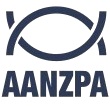| Howie, Peter |
Digging for gold: the search for meaning (PDF, 229.4 KB) |
Journal 27 December 2018 |
Max Clayton, warm up, warm-up, warming up |
What are you focusing on in your research?’ Max asked with clear interest. ‘Defining the psychodramatic concept of warm-up, Max,’ I said. I could see that Max was becoming mildly congested as his eyes reddened and his nostrils flared, presumably from the strengths of his responses ranging from ‘I’ve already written about that extensively’, to ‘Haven’t you listened to anything I’ve ever said?’ Not waiting for the congestion or dyspepsia to pass, whichever it might have actually been, I hurried on to head him off at the pass. ‘I know you’ve written about warm-up extensively in your co-authored book and in other works and chapters. You’ve written about how to recognise it, how to work with it, and where to expect it. And you’ve also taught extensively on how to notice and recognise it, and then work with it psychodramatically.’ As I spoke, Max seemed to settle, so I continued... |
4 |
2018-12 |
| Howie, Peter |
Working with the Ladder of Inference: a Psychodramatists Guide (PDF, 72.2 KB) |
Journal 15 December 2006 |
|
This paper sets out a simple yet profound model that suggests our actions are determined via a causal loop of inference based on minimal or even absent data. It shows how we make snap judgments, responses and reactions. The author has found this model enormously useful as a psychodrama practitioner, adult educator and trainer. The model can be used in groups and it assists in creating fresh perspectives. This is a practitioner's paper designed for practitioners. |
9 |
2006-12 |
| Howie, Peter |
Lasting Impressions: Robert Crawford, Queen Mary Hospital and 'Too Good to Last' (PDF, 108.4 KB) |
Journal 19 December 2010 |
|
Peter Howie favourably reviews the book 'Too Good to Last: The Death of a Caring Culture' whilst also honouring the legacy of it's author, Dr. Robert Crawford and the unique healing institution that he developed and led at Queen Mary Hospital, Hanmer Springs, Aotearoa New Zealand. |
9 |
2010-12 |
| Howie, Peter |
Book Review: "Sociodrama and Team Building" by Ron Weiner (PDF, 188.6 KB) |
Journal 8 December 1999 |
|
No abstract available |
20 |
1999-12 |
| Howie, Peter |
Book Review: "The Living Spirit of the Psychodrama Method" by Max Clayton and Philip Carter (PDF, 154.6 KB) |
Journal 13 December 2004 |
|
No abstract available |
15 |
2004-12 |
| Baakman, Paul; Cartmel, Brendan; Gunner, Andrew; Howie, Peter |
Working With Men (PDF, 391.5 KB) |
Journal 2 December 1993 |
|
In this section four men write briefly about their work with men both individually and in groups. |
7 |
1993-12 |
| Howie, Peter |
Seeing Double: Moving Between a Psychodramatic and a Sociodramatic Perspective (PDF, 66.2 KB) |
Journal 17 December 2008 |
|
In the debate about the differences and different uses of psychodrama and sociodrama, the most useful conclusion is to 'see double'. In any group or drama, both a psychodramatic and a sociodramatic perspective can be useful. The paper posits that, in the final analysis, psychodrama is a focused and specialised form of sociodrama because everything that takes place in a psychodrama is connected to the group, and through the group to the socius. Examples from practice are included to illustrate the premise. |
8 |
2008-12 |
| Howie, Peter; Synnot, Elizabeth |
Working with Indigenous Community Leaders in Cape York (PDF, 68.2 KB) |
Journal 16 December 2007 |
|
Both Diz and Peter are on staff at the Queensland Training Institute of Psychodrama, which along with their successful organisation consulting business is now a part of the Moreno Collegium for Human Centred Learning, Research and Development. Over the past 4 years we have been running an 8 day Cape York Strategic Leaders Program in far North Queensland. The purpose is to work with leaders from remote indigenous communities in Cape York and so liberate their capacities to use their wisdom, experience and knowledge in an active and potent manner. We actively: apply the principle of spontaneity (Spontaneity rules!); reduce isolation between participants by building relationships; enlarge individual functioning and create and enjoyable learning- rich environments. is still in operation. So it is a complicated matter to have people from different communities. While there are clear connections and a pride in their differences, these differences are quite substantial. |
6 |
2007-12 |
